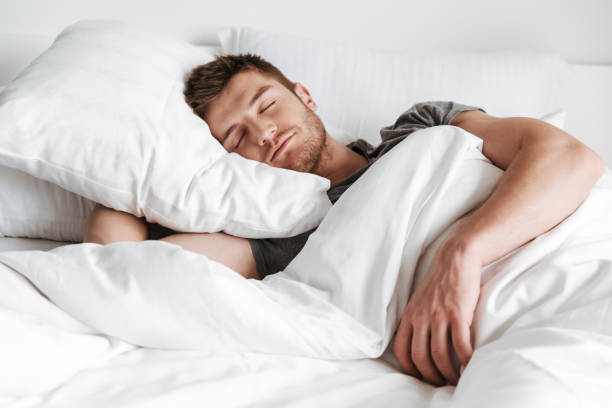TECHNOLOGY
ARE SMART DEVICES TRULY MAKING US LESS SMART??
6th APRIL 2025 / LILIA MCPHEE/ LEAVE A COMMENT
The use of technology has grown massively over the past decade. Did you know that over 90% of the global population own at least one smart device? It’s no surprise really considering how fast innovation is moving. These smart devices we own like our mobile phones , smart watches and even smart fridges are designed to make our life more simple , faster and bring us more connected to one another.
But here lies the big questions … are these smart devices the downfall for us as humans? making us lazy , distracted and less capable to think for ourselves.
Credit: Eli Savage, Staff Illustrator
In this blog we will focus in on the ups and downs of the digital world , the impact it has posed on human intelligence and what can be done to reverse the negative side effects that have come from the use of these devices.
How smart devices have evolved us in a positive way 📈
Advancements in technology which has led to the reign of smart devices has really helped evolve the world . Below are three key areas in which they have enhanced human capability.
- Instant information ℹ️ – The use of the Internet and AI access has helped humans to gain information in lightning speed . Speeding up processes such as gathering information for assignments, work projects or just general knowledge.
- Connection globally 🌍 – Having facilities like FaceTime , Skype and social media has helped people to stay connected wherever and no matter the distance.
- Safety and awareness⚠️ – Innovations in smart technology gave improved safety for the public. For example, phones can now detect earthquakes , send weather alerts and track a persons location via apps like life360. Having these facilities has helped to keep people safer and spread word of danger in a more efficient way.
Although while this may all sound like sunshine and rainbows there are big issues that have followed from these smart devices….
The Dark side 📉
Some of the key negatives of using these smart devices are…
- Dependency 🤖 – With frequent use of these smart devices people have forgot how to think for themselves which is a result from having access to pretty much anything at your fingertips. For example, google and now the likes of chatGPT and Microsoft Copilot can answer questions at a fast pace. This has also been proven to have effects on users memory and retention from these new tools and features on smart devices people no long feel the need to hold so much information or remember it like they used to.
🧠 would you say you rely too much on your devices for simple information that you already know but you are just too lazy to retain this information?
- Attention span 🚨 – Humans attention span has lowered dramatically over the last decade as a result of technology and social media in the 2000 it was recorded that the average attention span for an adult was 12 seconds however it recent years it has fallen to 8.25 seconds being lower than a goldfish at 9 seconds.
🧪 Why not find out your own individual attention span through The attention span test .
- Losing our ability to think critically 💭 – we often accept the first thing we see as a fact falling victim to things we hear and see on our smart devices , like social media and scare mongering from fake news shared online through our smart devices.
“Personally, I relate with the issues touched on above having grown up with smart devices myself. They’ve been both a blessing and a drawback in various aspects of life. Looking back on my childhood, one of my first smart devices was a Nintendo DS. I believe this hindered with my ability to socialise with others during a crucial stage of development as a young person which is something that has followed me into my adult life”.
Watch this short video to see another person’s take on the decline smart devices are having on us…
Source: YouTube, CBS Sunday Morning
Mental and physical health decline
Despite making us less smart it also has detrimental impacts on a person health both physically and mentally through sleep , anxiety and social aspects read here for more.
Credit: Aesthetic Apparatus
What can we do?
so how can we reverse these effects before it’s too late ..
- Designated No tech time 📵
- Set Screen time limits ⏰
- Create designated Tech free areas in your living spaces like bedrooms and dinner tables while eating. This can help with sleep and being present in the moment rather than having the distraction of your phone , laptop, tv and social media. 🧘♀️
All these practices are a form of digital detox and mindfulness take a further look into what this really means for you and the benefits of this bellow .
source: YouTube, Bupa Health
Final thoughts …
Mokokoma Mokhonoana once said…
“Some devices are smart, unlike their owners.”
― Mokokoma Mokhonoana
Let’s change this….
Finding a smart way of using your digital devices could be the reinvention of the smarter YOU 🫵. Remember that when you next go to grab them!
The development in these smart devices has advanced us but this has come with implications on the way we think. The goal is not to fall backwards but instead implement balance by becoming more aware of these issues and work smarter around them.
So the real question isn’t are smart devices making us less smart as a matter of fact its can we outsmart our smart devices?
Striking a healthy balance of using these devices to enhance and not replace our thinking we really can have the best of both worlds.
 Credit: Verywell , Laura Porter
Credit: Verywell , Laura Porter
As we come to the end of this why not challenge yourself to a full hour today completely tech free and with that, I mean Everything…. Use this time to reconnect with the real world through tasks like reading , drawing , going for a walk or having a genuine face to face conversation with someone.
Then reflect… and ask yourself….
- Did you feel more focused ? 🧠
- Would you do this again? 🔁
- Were you tempted in any way to pick up your phone or any other smart device? 🤳
Leave a comment and share this experience! If you participated in something different from the suggestions above let others know in the comments with the hopes to inspire ideas for future tech free hours. And if you completed the attention span test go ahead and compare your scores bellow.



















 It is scary — one minute you are in sixth form or college with your clique, and the next, you are all off to different unis and basically starting life from scratch.
It is scary — one minute you are in sixth form or college with your clique, and the next, you are all off to different unis and basically starting life from scratch.



 do whatever you need to do to feel okay.
do whatever you need to do to feel okay.







:max_bytes(150000):strip_icc()/article_7866255_foods-you-should-eat-every-week-to-lose-weight_-04-d58e9c481bce4a29b47295baade4072d.jpg)



:max_bytes(150000):strip_icc()/Getty_diary-10174446-56af9a195f9b58b7d01af022.jpg)












Leave a Reply